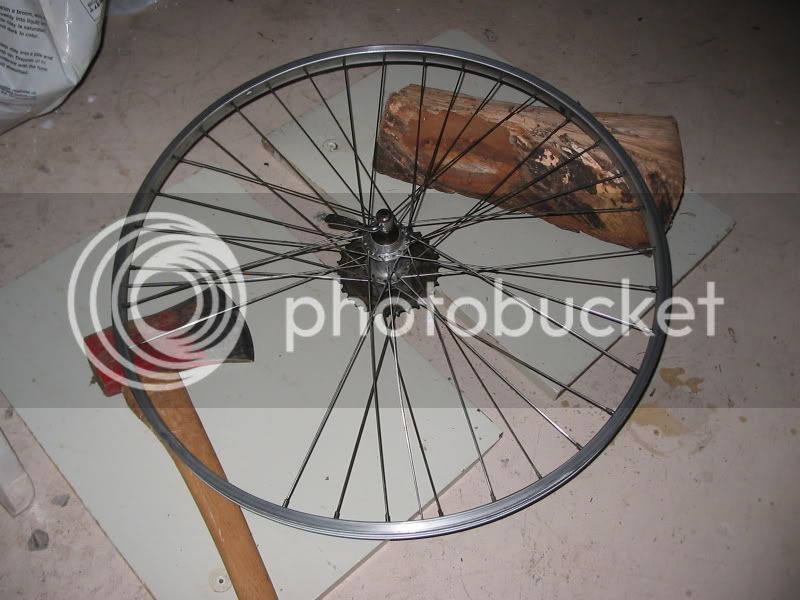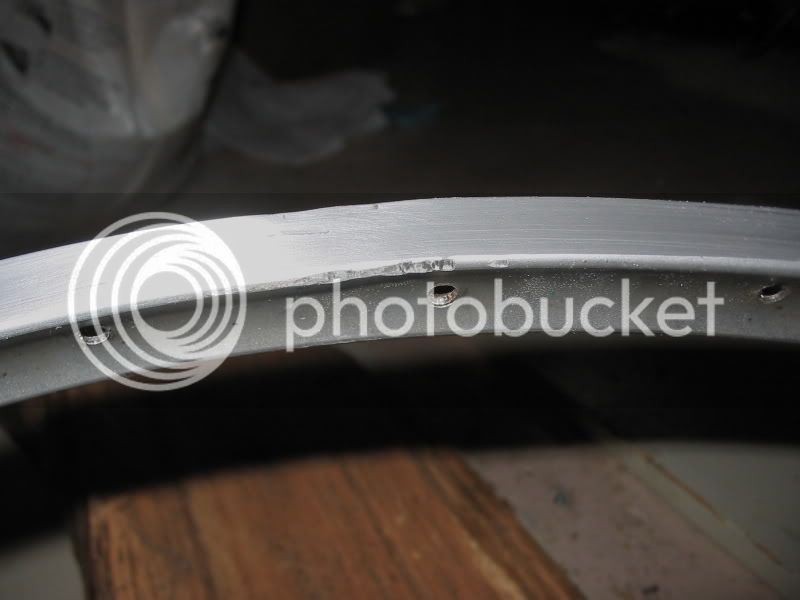Right so I've been meaning to repair the back wheel on my Miyata for quite some time. It's gotten messed up by hitting something so it had a flat spot on it. I guess if it were really bad I'd probably have known by now... But really just an uncomfortable lump in the wheel's rotation that can't be fixed by truing. thump - thump - thump - thump - thump... So today I felt especially adventurous and decided to repair it.
Here's the big idea: To put the black notch on the rim above the hole between the two boards, then put the log over it and use the swing wrench to achieve precision geometry corrections on the rim. In reality, it takes a hell of a lot of force to adjust a rim in such a way, so I ended up not using the log. This left marks, but it made the rim go back into shape. I noticed both sides aren't perfectly equal, so I had to play a bit to get a compromise.

The black notch was bent into the rim quite a bit though. I used an adjustable wrench to make it un-bent. This worked OK but the result felt kinda clumsy.

I figured the irregularities would hurt braking so I took some sandpaper and smoothed the most of them out. the end result seemed acceptable to my eye-meters and digital prods.

Now the wheel is back on the bike with all the spokes equally slackened. The moment of truth shall come once I get them all tightened back up and adjusted as best I can. I don't think I'll be able to make the rim perfectly straight & round again, but certainly it should be a lot better then it used to be.
Here's the big idea: To put the black notch on the rim above the hole between the two boards, then put the log over it and use the swing wrench to achieve precision geometry corrections on the rim. In reality, it takes a hell of a lot of force to adjust a rim in such a way, so I ended up not using the log. This left marks, but it made the rim go back into shape. I noticed both sides aren't perfectly equal, so I had to play a bit to get a compromise.

The black notch was bent into the rim quite a bit though. I used an adjustable wrench to make it un-bent. This worked OK but the result felt kinda clumsy.

I figured the irregularities would hurt braking so I took some sandpaper and smoothed the most of them out. the end result seemed acceptable to my eye-meters and digital prods.

Now the wheel is back on the bike with all the spokes equally slackened. The moment of truth shall come once I get them all tightened back up and adjusted as best I can. I don't think I'll be able to make the rim perfectly straight & round again, but certainly it should be a lot better then it used to be.

